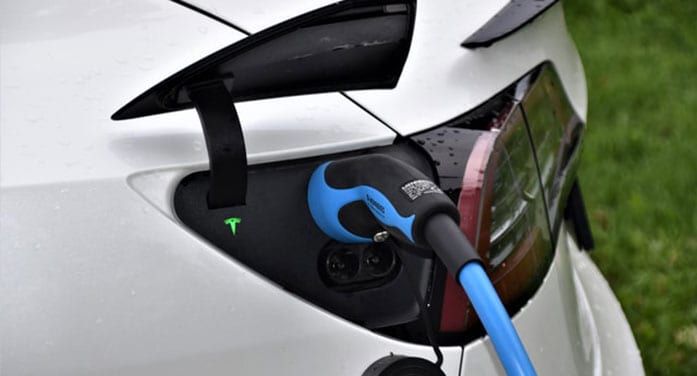Reading Time: 3 minutes
 The slogan on licence plates reads, “Friendly Manitoba” but it might need to be changed to “Powerhouse Manitoba” over the next decade!
The slogan on licence plates reads, “Friendly Manitoba” but it might need to be changed to “Powerhouse Manitoba” over the next decade!
Manitoba has a combination of the Hudson Bay seaport in Churchill giving access to an Atlantic Ocean channel, world-class nickel deposits, and a rail line allowing other precious metals such as lithium and gold from neighbouring provinces and territories to be exported globally via Churchill.
All of this puts Manitoba at the forefront for an electric vehicle revolution.
Oil sands operations in Alberta and Saskatchewan leave behind subsurface brine that’s actually valuable. The brine has an added benefit of providing large lithium supplies at most oil sands operations. Lithium is a key ingredient in electric vehicle batteries.
Canada’s North is also a global leader in gold deposits, another key precious metal needed for many electric vehicles.
All of these supplies can be shipped through the Port of Churchill on Hudson Bay. This means Manitoba will directly and indirectly quarterback a renewed Western Canadian powerhouse, focused on helping make the world greener through electric vehicles.
The average water depth in Hudson Bay is 100 metres or 328 feet. A modern double-hull cargo vessel only needs 50 to 60 feet of water to navigate.
Hudson Bay is now ice-free six months of the year. It’s not particularly thick because it’s first-year salt-water ice and modern icebreakers have no problem ensuring clear waters. Modern double hull cargo vessels have few issues breaking through relatively thin ice that might remain after a pass from icebreakers.
So Manitoba is positioned to be a major player in the electric vehicle global supply chain. If Canada can put together a plan to process these precious metals instead of simply shipping them somewhere else to be finished, we could find ourselves the envy of the world.
The international electric vehicle tsunami has begun to reach the shores of North America. Companies like Ford, General Motors and Volkswagen all plan to go entirely electric over the next few years, chasing Tesla for dominance.
Manitobans may not realize it but they’re positioned to become an international energy hub. A significant portion of Canada and the United States will look to Manitoba for energy needs.
As in Quebec, Manitobans have invested heavily in world-class hydroelectric power. The water turbines on Lake Winnipeg have given Manitobans a tremendous source of clean, renewable energy that can help feed and beef up the North American electric grid.
Now all three Prairie provinces can benefit from the disruption and innovation in electric vehicle transportation because of Manitoba.
Clinton Desveaux writes on electric vehicles and disruption issues. He lives in Halifax.
Clinton is one of our Thought Leaders. Why aren’t you?
For interview requests, click here. You must be a Troy Media Marketplace media subscriber to access our Sourcebook.
The views, opinions and positions expressed by columnists and contributors are the author’s alone. They do not inherently or expressly reflect the views, opinions and/or positions of our publication.

